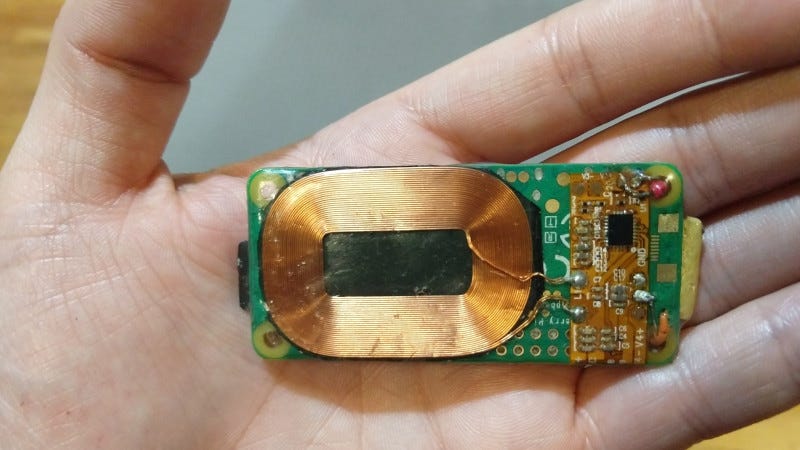Issue #222 - biohackers implanted a tiny computer in the leg; Paperclip Maximizer explained; a conversation between Elon Musk and Jack Ma; and more!
View this email in your browser
This week - biohackers implanted a tiny computer in the leg; Paperclip Maximizer explained; a conversation between Elon Musk and Jack Ma; and more!
MORE THAN A HUMAN
Pegleg: Raspberry Pi Implanted Below The Skin

A group of biohackers implanted a Raspberry Pi computer under the skin because why not. Installed in the leg, Pegleg runs a distro of PirateBox so while it is powered, any end-users with a WiFi device can connect to find an anonymous chat room, file server, and a video of the installation surgery if the owner kept it.
► Smart drugs: All-natural brain enhancers made by mother nature | Dave Asprey (4:25)
Dave Asprey, a professional biohacker, discusses two natural brain enhancers (aka smart drugs or nootropics) - caffeine and nicotine.
► The Bionic Girl Who is Making Prosthetics Cool: Tilly Lockey (14:54)
Tilly Lockey, the "Bionic Girl" who is making prosthetics cool and her father Adam Lockey, recently spoke with Andrea Macdonald, Founder of ideaXme Ltd. They discussed Tilly’s incredible journey to becoming a worldwide spokesperson for prosthetics and her quest to increase both the awareness of meningitis, as a disease and its symptoms.
Gene Editing Humans: It’s Not Just about Safety
With first genetically modified humans born in China, the discussion about human gene editing moved to the spotlight. This article explains what is being discussed - the blurring line between germ-line and somatic genome modification; possible social consequences; and something called "hyperagency" which might manifest itself in making genetically modified children forced to pursue what their parents decided, by choosing the right genes, for them to do.
ARTIFICIAL INTELLIGENCE
When Elon Met Jack: Musings on AI, Mars and the End of Civilization

Here is a summary what Elon Musk and Jack Ma were discussing about at World Artificial Intelligence Conference. The full conversation can be found here if you are interested.
► The Paperclip Maximizer (22:32)
The Paperclip Maximizer is a popular thought experiment showing how easy an AI can go rogue. In this video, Isaac Arthur explains the experiment and paints different visions how it can go while introducing instrumental convergence into the mix. I like when Issac lets his imagination run free and creates a world where an AI researches genetic engineering and space travel to make more appealing paperclips for humans.
Sapient Sentient Intelligence Value Argument (SSIVA) Theory
Here's an interesting concept to read about - Sapient and Sentient Intelligence Value Argument (SSIVA) Theory. SSIVA states that “ethically”, a fully Sapient and Sentient Intelligence is of equal value regardless of the underlying substrate which it operates on meaning a single fully Sapient and Sentient software system has the same moral agency as an equally Sapient and Sentient human being.
ROBOTICS
Reach Robotics is closing up shop
Robotics is not easy. Reach Robotics, the company behind the spider-like MekaMon robot you might’ve seen on the shelves at the Apple Store, is closing down. "The consumer robotics sector is an inherently challenging space – especially for a start-up", writes Reach Robotics co-founder.
Of Course Citizens Should Be Allowed to Kick Robots
Is it ok to punch a robot? It's an interesting question from robot-human interaction and according to this article, it depends on what kind of robot you want to punch. If we are talking about a surveillance robot, go on.
MIT’s fleet of autonomous boats can now shapeshift
MIT’s fleet of robotic boats has been updated with new capabilities to “shapeshift,” by autonomously disconnecting and reassembling into a variety of configurations, to form floating structures in Amsterdam’s many canals. Don't expect T-1000 type of shapeshifting, though.
Robot pole dancers to debut at French nightclub
No job is safe from robots...
How Robotics Teams Prepared for DARPA's SubT Challenge
Roboticists share what they've learned so far from DARPA's Subterranean Challenge, and how they readied their bots for the next event—the Tunnel Circuit.
Creepy Robotic Worm Could Wriggle Through Your Brain Arteries
A team of researchers at the Massachusetts Institute of Technology (MIT) have invented a tiny robotic worm that could be steered through the tiny arteries in the human brain using a magnet.
BIOTECHNOLOGY
Cellular Computers Get a Boost With CRISPR

This month, a team at MIT tapped the computational power of DNA to transform it into a minicomputer. Similar to its silicon counterpart, the technology dubbed DOMINO allows cells to read and write life events into single letters in its DNA. Unlike previous generations of cellular recorders that disrupt large chunks of genomic information, DOMINO alters data at the “bit” level. This keeps the cell functional, while massively increasing accuracy and storage capacity. What’s more, scientists can layer the operations using logic gates, essentially turning cells into a computational powerhouse.
Thank you for subscribing,
Conrad Gray (@conradthegray)
If you have any questions or suggestions, just reply to this email or tweet at @hplusweekly. I'd like to hear what do you think about H+ Weekly.
Follow H+ Weekly!


